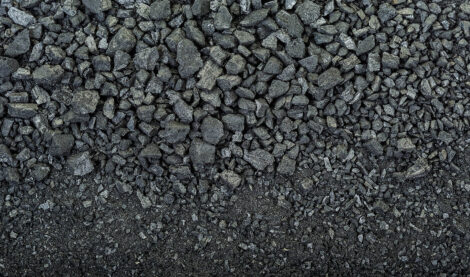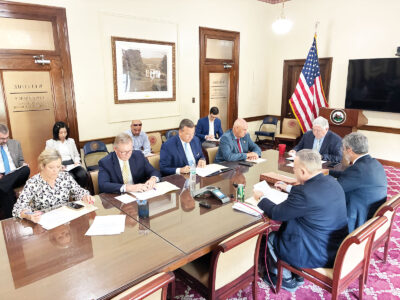Archaeologist discusses burial mound
PARKERSBURG – The Grave Creek Mound has been an interesting place in the Moundsville area for many years, an archaeologist told a crowd gathered Sunday at the Blennerhassett Museum in Parkersburg.
In the first program in the 2016 Blennerhassett Winter Lecture series, archaeologist Andrea Keller discussed the history and interesting points of the mound.
Prehistoric Native Americans who were members of a culture known today as the Adena people moved about 57,000 tons of earth to create the 60-foot tall burial mound that remains a prominent landmark in Moundsville, W.Va.
“The mound has a very long and varied history,” Keller said.
She discussed the history of ancient people, described as “Ice Age Hunters,” throughout the region and described the type of tools they used, including bone point tools and scrapers. She also discussed the importance of the Ohio River and area streams in helping to get people, ideas and artifacts around. Artifacts like pottery showed that people had settled in an area as pottery was made to last.
The mound itself dates to around 250-150 B.C.
“What we know about the mound gets really interesting sometimes … because what we know comes from people digging into the mound in the 1800s (around 1838),” Keller said. “At that time, the people doing the digging were not trained archaeologists.
“They were curious and they did the best they could. They were hoping to find a lot of interesting things where they could create a museum that would be a tourist attraction.”
A tunnel was dug into the mound around the center of the structure and they found a “hollow space” with remains and artifacts. A vertical tunnel was dug and a second tomb was found. The lower vault had two people described as a male and a female with one wearing shell beads and a flat decorative stone.
“There were not a whole lot of artifacts,” Keller said.
The upper vault contained one person with a few more artifacts on this person, including shell beads, copper bracelets and a few ornaments.
“Again, this must have been disappointing,” Keller said of the people who made the first excavations of the mound.
Another item reported found in the upper tomb was the “Grave Creek Tablet,” a stone with strange writing on it. A number of translations were attempted with different sources making different interpretations which led some people to think the tablet was a fake, something the people behind the dig planted to generate interest in the dig.
Although pictures and accounts of the tablet were made, the actual stone has disappeared.
“We are still working on this whole mystery,” Keller said.
A number of other earthen works have been chronicled throughout the Moundsville area.
“We are not really sure how it all fits together,” Keller said.
George Washington was known to have owned land in the area. Joseph Tomlinson was one of the earliest settlers in the area and found the mound while hunting and realized it was a unique structure. The mound wasn’t excavated until after Tomlinson’s death.
Keller gave descriptions of the early museum built at the mound. A building was once built on top of the mound, which some say was a saloon. In 1908, efforts began to preserve the mound, including Mound Day, where collections were taken to help take care of the mound. This was illustrated with a receipt and booklet from that time that was donated.
“A lot of people think we just want artifacts, but sometimes these paper records can also help tell the story of an archeological site,” Keller said.
In 1909, the state of West Virginia purchased the mound.
Trustees (inmates) from the Moundsville Penitentiary were used to do a lot of work around the site, including landscaping and building a building that eventually housed a museum for the mound and a gift shop that sold items made by the inmates at the prison.
From studies of the mound, archaeologists determined it was built by piling up earth using stone tools, Keller said.
The site now has a full research center where studies are still being conducted. This spring, there will be remote-sensing work done of the mound.
“They don’t want to do further excavations of the mound,” Keller said, because such things could disturb other burial chambers that had not yet been discovered.
“There could be some possible secondary burials,” she said. “You don’t want to disturb the mound itself, because you don’t want to disturb anything.
“Also, many of the native people consider these sites sacred so digging into it can be very disturbing for them. We want to do some things where you don’t have to dig.”
The next program in the lecture series will be “Behind the Camera Lens – A Photographic History of Parkersburg and Mid-Ohio Valley” presented by Paul Borrelli of Artcraft Studios in Parkersburg. It will be at 2 p.m. Feb. 14 at the museum, followed by two more lectures on Feb. 21 and Feb. 28.






